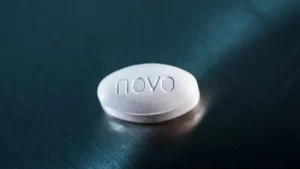Obesity and type 2 diabetes are two major public health concerns that are closely linked. In recent years, medical weight loss programs have gained popularity as a treatment option for people looking to lose weight and manage their diabetes.
Two FDA-approved medications that are currently being used for this purpose are Mounjaro vs Trulicity. These drugs belong to the class of GLP-1 receptor agonists, which work by activating the gut hormone GLP-1 and slowing down gastric emptying, leading to increased satiety and reduced appetite.
While both Mounjaro and Trulicity share similar mechanisms of action, they differ in terms of their approval status, dosing regimens, side effects, and off-label use for weight management. Choosing between these medications can be complex and depends on individual factors such as age, sex, comorbidities, medication adherence, cost-effectiveness, and patient preference.
This article will provide an overview of Mounjaro vs Trulicity in terms of their efficacy, safety profile, dosing guidelines, potential benefits and drawbacks for different patient populations. By understanding the similarities and differences between these two drugs, patients can make informed decisions about which medication may be best suited for them in achieving their weight loss goals while managing their diabetes.
Mounjaro vs Trulicity
The comparison between the two FDA-approved medications for type 2 diabetes mellitus that activate GLP-1 gut hormone and produce slow gastric emptying, resulting in prolonged satiety, can be likened to a battle of equals.
Mounjaro vs Trulicity have both been proven effective in promoting weight loss while helping manage diabetes. However, there are some notable differences between the two medications that patients should consider before deciding which one to take.
The cost comparison is an important factor to consider as both medications require weekly injections. While Mounjaro is not yet approved for weight loss treatment and therefore does not have a set price point, Trulicity can cost around $800 per month without insurance coverage. Additionally, patient eligibility may differ between the two drugs as Mounjaro has stricter criteria for inclusion in clinical trials.
Weight loss results may also vary depending on individual factors such as diet and exercise habits. Injection site reactions and medication interactions should also be taken into consideration when choosing between the two drugs. Ultimately, it is best to consult with a healthcare professional to determine which medication would be most suitable based on individual needs and circumstances.
As for their mechanism of action, both Mounjaro vs Trulicity activate GLP-1 receptors in the body’s digestive system leading to slower digestion and increased feelings of fullness after eating. This helps control blood sugar levels while reducing caloric intake which leads to weight loss over time.
Mechanism of Action
Understanding the mechanism of action behind Mounjaro and Trulicity is crucial in determining their efficacy as FDA-approved medications for type 2 diabetes mellitus and potential off-label use for weight management.
Both drugs activate the GLP-1 gut hormone, which regulates blood glucose levels by stimulating insulin secretion and suppressing glucagon release. This hormonal regulation results in slow gastric emptying, making you feel full for longer periods. As a result, both drugs work as appetite suppressants, making it easier to stick to a low-calorie diet and lose weight fast.
Additionally, the weight loss benefits of Mounjaro and Trulicity may be attributed to their effects on hormonal regulation beyond GLP-1 activation. These medications also interact with other hormones involved in metabolism, such as leptin and ghrelin. The combination of these mechanisms leads to reduced food intake, increased satiety, and improved glycemic control.
Overall, understanding how Mounjaro vs Trulicity work can help healthcare providers determine which medication is best suited for individual patients based on their specific needs.
Off-label use for weight management will be discussed in the subsequent section without repeating any information from this paragraph.
Off-Label Use for Weight Management
Exploring the potential off-label use of FDA-approved type 2 diabetes medications for weight management is a topic of interest among healthcare providers. Trulicity and Mounjaro are two such drugs that have shown efficacy in promoting weight loss by suppressing appetite, slowing gastric emptying, and activating the GLP-1 gut hormone. Healthcare providers may recommend these medications off-label to eligible patients who struggle with obesity or are overweight and have failed to lose weight through lifestyle changes alone.
Potential benefits of using Trulicity or Mounjaro include significant weight loss and improvement in glycemic control. However, patient eligibility is limited to those with a BMI of 30 or higher or a BMI of 27 or higher with at least one weight-related condition. The long-term effects of these medications on cardiovascular health, kidney function, and other organs are still under investigation. Healthcare provider guidance is crucial when considering these medications as alternative weight loss options due to their potential side effects and interactions with other medications.
Transitioning into the subsequent section about ‘approval status,’ it is worth mentioning that while both medications have been approved for type 2 diabetes mellitus treatment, only Mounjaro has yet to receive FDA approval for weight management purposes by the end of 2023.
Approval Status
The FDA approval status of type 2 diabetes medications for weight management is a critical aspect that healthcare providers consider when recommending treatment options to eligible patients.
The development process for any medication involves several stages, including preclinical and clinical trials, to ensure safety and efficacy. Similarly, the regulatory requirements set by the FDA are necessary before approving any drug for human use.
Both Mounjaro vs Trulicity have undergone rigorous testing and have been approved by the FDA to treat type 2 diabetes mellitus. However, while Trulicity is currently approved for weight loss as well, Mounjaro is still in the pipeline to become an officially approved weight loss medication by the end of 2023.
Clinical trials prove that both medications are safe and effective in managing blood sugar levels and promoting weight loss. The dosage amount of these medications should be gradually increased under medical supervision until reaching the most optimal amount.
Eligibility criteria include having a BMI of 30 or higher or a BMI of 27 or higher with at least one weight-related condition such as high blood pressure or sleep apnea. With their approval status secured through clinical trials and regulatory requirements, both Mounjaro vs Trulicity offer promising treatment options for those struggling with obesity or overweight conditions.
Dosage and Administration
Dosage and administration are crucial aspects to consider when prescribing medications for type 2 diabetes mellitus, and both Mounjaro and Trulicity require gradual dosage increases under medical supervision until reaching the most optimal amount. The starting dosage for Mounjaro is 1 milligram weekly, while Trulicity’s starting dosage is 0.75 milligrams weekly. After the first dose, doctors gradually increase the dosage based on a titration schedule until reaching the most effective amount.
It is essential to follow your healthcare provider’s instructions on how to inject these drugs as they differ in the injection site and technique. If you miss a dose, take it as soon as possible unless it is close to your next scheduled dose.
After discussing dosage and administration, it is important to note that both medications have common side effects that can occur during treatment. Nausea, vomiting, diarrhea, stomach pain, and constipation are among them. Combining Trulicity or Mounjaro with alcohol can also increase their side effects severity.
In addition to lifestyle changes such as diet and exercise being necessary for successful weight loss outcomes when taking these drugs, patients should understand potential side effects before beginning treatment with them.
Side Effects and Precautions
Moving on from the previous subtopic on dosage and administration, it is essential to consider the potential side effects and precautions associated with Mounjaro vs Trulicity. While both medications have been proven safe for weight management, they can still cause adverse reactions in some patients.
Common side effects of these drugs include nausea, vomiting, diarrhea, stomach pain, and constipation. It is crucial to take note of these symptoms as they may affect your daily routine or lead to dehydration if not managed properly.
Furthermore, combining medication with alcohol can increase the risk of side effects. Healthcare providers advise against drinking alcoholic beverages while taking Trulicity or Mounjaro as it can worsen gastrointestinal symptoms such as nausea and vomiting.
As with any medication, it is also important to follow proper management strategies for long-term effects. Patients who experience severe side effects should seek medical attention immediately or consult with their doctor about adjusting their dosage or switching to a different treatment option. Precautionary measures like these ensure that patients receive optimal care while managing their weight loss effectively.
Frequently Asked Questions
Are there any differences in the cost of Mounjaro vs. Trulicity?
When comparing the cost of Mounjaro vs Trulicity, several factors come into play. Both medications are relatively expensive, with prices fluctuating depending on location and pharmacy. Patients may find that insurance coverage varies for each drug, with some plans covering one medication over the other or requiring a higher copay for one drug.
Affordability options such as coupons and patient assistance programs can help offset costs, but these may not be available to all patients. Currently, there are no generic alternatives available for either medication. It is important to note that while cost is a significant consideration when selecting a weight-loss medication, effectiveness and safety should also be taken into account.
A healthcare provider can guide in determining which medication may be the most appropriate option based on individual needs and circumstances.
How long does it take for Mounjaro or Trulicity to start working?
According to clinical trials, Mounjaro and Trulicity can start producing weight loss results within the first few weeks of treatment. The effectiveness timeline may vary depending on dosage requirements, which are gradually increased by healthcare providers until reaching the optimal amount.
While both medications activate the GLP-1 gut hormone and produce slow gastric emptying, potential side effects such as nausea, vomiting, diarrhea, stomach pain, and constipation should be considered. User experience with these medications may differ based on individual factors such as overall health status and lifestyle habits.
When compared to other weight loss medications, Mounjaro and Trulicity have shown promising results in helping individuals achieve significant weight loss in a relatively short period.
Are there any specific dietary restrictions or recommendations when taking Mounjaro or Trulicity?
When taking Mounjaro or Trulicity, certain dietary restrictions and recommendations should be followed. Recommended diets for weight loss include a balanced diet with reduced calorie intake, including lean proteins, whole grains, fruits, and vegetables. An exercise routine of at least 150 minutes per week is also recommended to aid in weight loss.
Nutritional supplements may be beneficial but should be discussed with a healthcare provider before use. Lifestyle changes such as reducing stress levels and getting enough sleep can also contribute to successful weight loss. Adequate hydration levels are important when taking these medications to prevent dehydration due to their effects on slowing gastric emptying.
It is essential to consult with a healthcare provider before starting any new diet or exercise regimen while taking Mounjaro or Trulicity.
Can Mounjaro or Trulicity be used for weight loss in individuals with type 1 diabetes?
There is limited research on the use of Mounjaro and Trulicity for weight loss in individuals with type 1 diabetes. Currently, these medications are only FDA-approved for the treatment of type 2 diabetes mellitus. However, off-label use of these medications for weight management in type 1 diabetes patients has been reported.
A comparison of efficacy between the two drugs has not been conducted specifically in this population. Safety concerns may arise due to the risk of hypoglycemia and the need for careful monitoring of blood glucose levels. Patient preference and adherence challenges may also be factors to consider when deciding on medication options.
Combination therapy with other weight loss medications or insulin may be an option but requires close supervision by healthcare providers. Further research is needed to fully understand the potential benefits and risks of using Mounjaro and Trulicity for weight management in individuals with type 1 diabetes.
Are there any potential long-term side effects of taking Mounjaro or Trulicity for weight management?
Suppose you are considering Mounjaro or Trulicity for weight management; it is essential to understand the potential risks and safety concerns associated with their long-term use.
While both medications are effective in suppressing appetite and promoting weight loss, they can also have adverse reactions that may lead to significant health consequences. Some of the reported side effects include nausea, vomiting, diarrhea, stomach pain, and constipation.
Furthermore, these drugs affect the GLP-1 gut hormone, which could potentially increase the risk of pancreatic cancer or thyroid tumors in some individuals.
Therefore, it is crucial to consult a healthcare provider before starting any weight loss medication and monitor regularly for long-term effects.
Conclusion
In conclusion, the comparison between Mounjaro and Trulicity has revealed their similarities and differences in terms of mechanism of action, off-label use, approval status, dosage and administration, side effects and precautions.
While both medications activate the GLP-1 gut hormone to suppress appetite and induce weight loss, Mounjaro is approved for the treatment of type 2 diabetes only while Trulicity is indicated for both diabetes and obesity.
Additionally, Mounjaro requires a lower dose but has more severe gastrointestinal side effects than Trulicity.
Despite these differences, both medications have proven efficacy in helping individuals achieve significant weight loss when used as part of a comprehensive weight management program.
However, it is imperative to consult with a healthcare provider before considering either medication due to potential contraindications or interactions with other medications.
Ultimately, the choice between Mounjaro and Trulicity will depend on individual factors such as medical history, lifestyle habits and treatment goals.
As such, a thorough evaluation by a healthcare professional is recommended to determine which medication may be most suitable for an individual’s needs.
References
Extra Glycemic Impacts of GLP-1 Receptor Agonists: Benefits of a Class Effect?. (n.d). https://scite.ai/reports/10.4236/ojemd.2016.61007
Anti-inflammatory, antinociceptive and antidiarrhoeal activities of methanol and ethyl acetate extract of Hemigraphis alternata leaves in mice. (n.d). https://scite.ai/reports/anti-inflammatory-antinociceptive-and-antidiarrhoeal-activities-K6Evm8e



